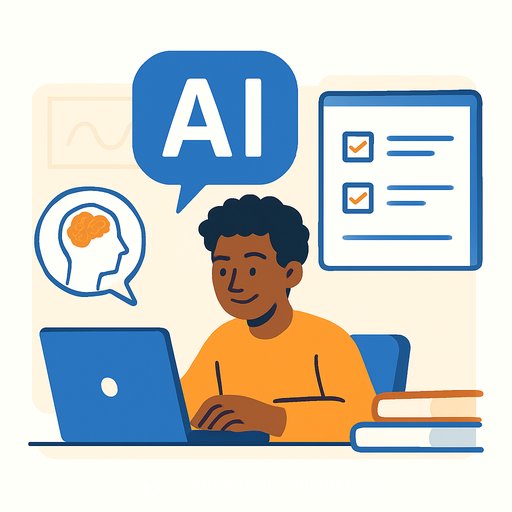As AI use grows, here's how schools are putting it to work in the classroom
When ChatGPT arrived in November 2022, students adopted it faster than most schools could respond. Debates followed: block it or teach it?
Either way, it's here. A 2025 Marquette University study of 1,422 Jesuit high school students found that 92% use AI for coursework. Nearly two-thirds said they use it as a tutor, not as a shortcut to cheat.
What students actually do with AI
- Ask for concept explanations in plain language and examples.
- Generate practice questions and step-by-step solutions to check understanding.
- Draft outlines, brainstorm ideas, and refine thesis statements.
- Get feedback on writing mechanics and clarity.
- Receive study plans, glossaries, and quick recaps before assessments.
The behavior points to tutoring and scaffolding. Cheating risk exists, but guidance and assessment design make the difference.
Practical ways to use AI well
For teachers
- Lesson planning: ask for unit plans aligned to your standards, then edit for your context.
- Differentiation: create leveled texts, vocabulary lists, and practice sets by readiness.
- Formative checks: generate exit tickets and quick quizzes with answer keys.
- Feedback: draft rubric-based comments you can personalize in seconds.
- Supports: turn notes into guided notes, sentence frames, and study guides.
- Communication: draft family updates in multiple reading levels and languages.
For students (with structure)
- "Explain this concept like I'm in 9th grade. Give two examples and one non-example."
- "Show each step to solve this problem. After each step, ask me what comes next."
- "I wrote this paragraph. Point out unclear sentences and suggest one fix per sentence."
- "Here's where I got stuck. What prior skills should I review? Build me a 3-day study plan."
Assessment and integrity
- Assess process, not just product: require outlines, drafts, and reflections with timestamps.
- Oral defenses and in-class demonstrations to verify understanding.
- Personalized prompts that draw on class experiences, data sets, or local texts.
- Mixed modes: in-class writing anchored by at-home prep; project logs with checkpoints.
- Avoid relying on AI detectors; they are inconsistent and can mislabel student work.
For research-based guidance on assessment and policy, see the U.S. Department of Education's report on AI in teaching and learning here and UNESCO's AI in education recommendations here.
Policy, privacy, and safety
- Define allowed use by task type: brainstorming OK, final answers without citation not OK.
- Set citation norms for AI assistance and model what a good attribution looks like.
- Protect data: no student PII in prompts; check vendor terms for storage and training.
- Age gates and teacher accounts for younger students; align with COPPA/FERPA.
- Human-in-the-loop: AI drafts; educators approve.
Equity and access
- Provide school-managed tools so access isn't tied to who can pay.
- Offer low-bandwidth options (printed AI-generated practice sets, offline readers).
- Teach prompt strategies explicitly so support is consistent for all students.
Professional learning that sticks
- Short, weekly labs: 20 minutes to test one workflow (feedback, differentiation, quizzes).
- Shared prompt library by subject and grade; keep examples with before/after artifacts.
- Coach check-ins to swap wins, pitfalls, and classroom-ready templates.
If you want ready-to-use courses and prompt libraries for educators, browse the latest options at Complete AI Training or see curated picks at Latest AI Courses.
30-60-90 day rollout (lightweight)
- Days 1-30: Form a small working group. Choose one use case per grade band. Draft guardrails.
- Days 31-60: Pilot in 3-5 classrooms. Collect student work samples and feedback.
- Days 61-90: Refine policy. Train the next cohort. Publish your prompt library.
Copy-and-paste starter prompts
- Teacher planning: "You are a high school biology teacher. Create a 5-day lesson sequence on cell transport aligned to NGSS HS-LS1. Include objectives, checks for understanding, and one scaffolded lab. Keep materials under $10."
- Differentiation: "Rewrite this article at three reading levels (approx. Lexile 800, 1000, 1200). Keep key terms consistent. Add 5 text-dependent questions per level."
- Student tutoring: "I'm learning factoring trinomials. Diagnose my error from this attempt: [work]. Teach me the correct method with one hint at a time."
- Feedback: "Use this rubric to give focused comments on clarity and evidence. Limit to 5 bullets: [rubric] [student paragraph]."
Quick tool picks (use what your district approves)
- General tutoring and drafting: ChatGPT, Claude, or Microsoft Copilot.
- Research support: Perplexity for sourced summaries.
- Math and science help: Khanmigo-style step prompts or structured tutoring flows.
- Workspace aides: Help Me Write in Google or Microsoft for emails and outlines.
Bottom line: students already use AI like a tutor. Bring it into the workflow with clear rules, assessments that check for understanding, and supports that save teachers time while helping students think better.
Your membership also unlocks:






